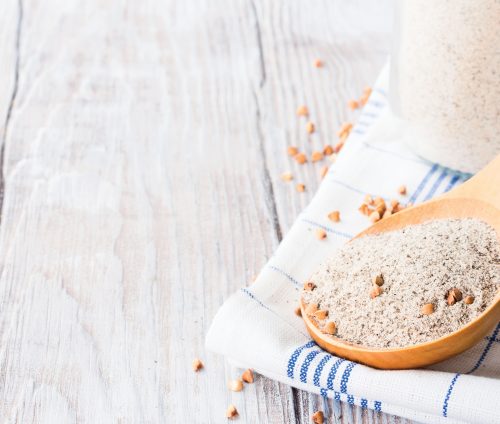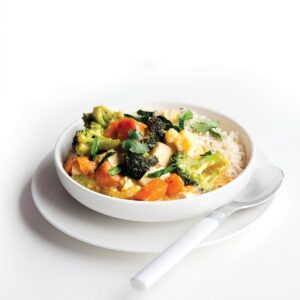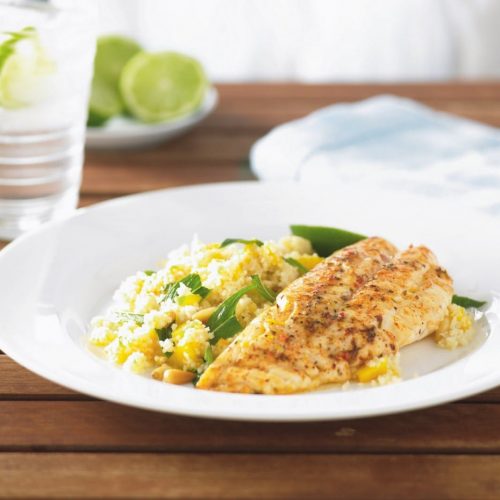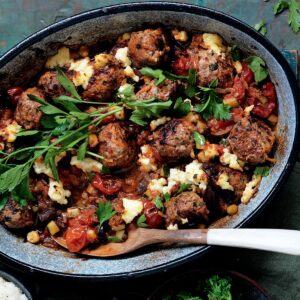
Getting enough fibre when you’ve eliminated gluten from your diet can be hard. Dietitian Lana Hirth shows you clever ways to meet your target.
For the estimated one in 70 Kiwis who have coeliac disease, removing gluten is a necessity, not a choice. Others choose to eat less bread and wheat-based food (and therefore less gluten) to help ease digestive discomfort.
But a gluten-free diet isn’t always a healthy option. Going gluten-free means you have to remove wheat, barley, rye and oats – so your diet can be lacking in fibre, iron and B vitamins.
Fibre is your gut’s best friend. Not only does it help keep you regular, it can protect against bowel cancer, lower your blood cholesterol and improve blood sugar control. The best benefits come from eating a wide range of high-fibre foods, including the following fibre types:
Soluble fibre
This acts like a sponge by absorbing liquid and helping ease bowel movements.
Good sources: fruit, vegetables, legumes
Insoluble fibre
This fibre acts as a bulking agent, sweeping through your colon like a broom to help reduce constipation.
Good sources: nuts and seeds, leafy greens, fruit and vegetable skins
Resistant starch
This promotes healthy gut bacteria, which aid good digestion.
Good sources: under-ripe bananas, lentils, cooked and cooled potatoes
| Food | Fibre |
|---|---|
| 4 dried apricots | 2.3g |
| 1 tablespoon chia seed | 4g |
| 20 almonds | 2.6g |
| 1 orange | 2.6g |
| 3/4 cup cooked brown rice | 2.8g |
| 1 cup cooked qunioa | 4.1g |
| 1 large baked potato with skin on | 7.2g |
| 1 corn cob | 6.6g |
| 1/2 cup green peas | 4.9g |
| 1/2 cup canned lentils | 3.5g |
Which whole grains are gluten free?
You don’t have to miss out on healthy fibre if you’re not eating wheat, rye, barley and oats. Try these gluten-free whole grains:
Brown rice
Brown rice is an easy, gluten-free way to boost your fibre intake, delivering a slightly nutty taste
Amarath
Amaranth has a mildly peppery taste. It’s great in soups and stews, or you can ‘pop’ it like corn and use it in muesli bars
Buckwheat
Buckwheat, which is not wheat as its name might suggest, makes a great stuffing for red capsicums. Buckwheat flour has up to three times the fibre of gluten-free flour
Millet
Millet has a very mild flavour. It can be boiled whole and used like rice, or enjoyed as a filling ‘porridge’ topped with cinnamon, shredded coconut and banana
Quinoa
Quinoa is a crunchy, nutty seed. It takes just 15 minutes to cook, using a ratio of 1 cup of quinoa to 2 cups of water. It’s also available as porridge flakes for gluten-free winter breakfasts
Teff
Teff is the smallest of grains, with a slightly earthy flavour. You can use cooked teff in soups or as an alternative to polenta.
How important is fibre?
Your high-fibre, gluten-free day on a plate
Breakfast
Homemade baked beans on a slice of gluten-free toast
16g Fibre
Or
Corn and capsicum fritters with avocado smash
12g Fibre
Lunch
Roasted vegetable salad with chickpeas
12g Fibre
Dinner
Steamed fish with brown rice and mixed veges
11g Fibre
Snacks
1 Packham pear, skin on
4.9g Fibre
30g unsalted mixed nuts
2.1g Fibre
1 kiwifruit
2.2g Fibre
2 cups popcorn
2.9g Fibre
How much fibre do I need (and how do I get more)?
It’s recommended women aim for at least 25g of fibre each day and men 30g. More than two-thirds of us don’t eat enough fibre, and following a gluten-free diet can make it even harder. Follow these five tips to boost your fibre if you have coeliac disease, or if you’d just like to boost your fibre levels in general.
- Leave on fruit and vege skins so you don’t lose ‘insoluble’ fibre – plus it saves time!
- Sprinkle chia, sunflower or pumpkin seeds on top of gluten-free cereal or yoghurt.
- Add chickpeas, lentils or beans to salads, soups and casseroles.
- Swap white rice for brown and choose more wholegrain foods.
- Snack on a handful of nuts and seeds between meals.
www.healthyfood.com










